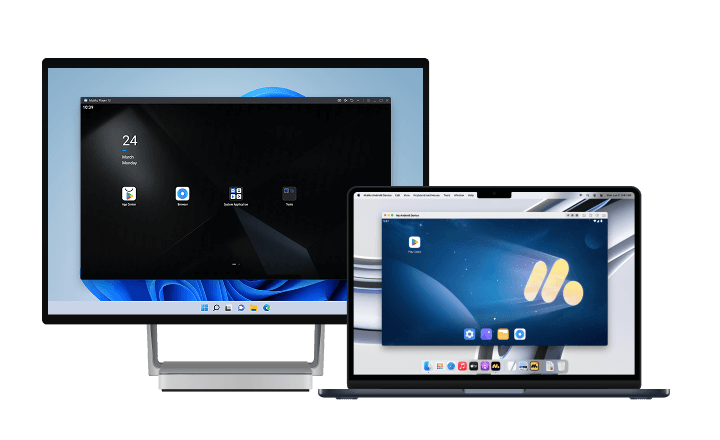How to Use the PUBG Map Like a Pro
In PlayerUnknown's Battlegrounds (PUBG Mobile), the map isn’t just a backdrop but your most powerful weapon. Pros don’t just play the map; they exploit it. They use terrain for cover, predict enemy movements, and turn geography into strategy. If you’re aiming to step up your game, mastering map usage is critical. This guide breaks down essential strategies for all maps, decision-making frameworks, positioning tactics, and tools you need to use the terrain to your advantage.
For more guides, please review the list below:
- PUBG Mobile 3.8 Beta Updates Features
- PUBG Mobile Icemire Frontier Mode in Version 3.5
- PUBG Mobile and Hunter×Hunter Collaboratio
1. Understand Each Map’s Personality
Every PUBG map has a different layout and pacing, which directly affects how you play.
Erangel, spanning 8x8 km, offers a well-balanced mix of forests, hills, and towns, with loot moderately distributed across the map.
Miramar is also 8x8 km but set in the desert, with vast open spaces and long sightlines. It demands a heavy reliance on high ground and punishes poor positioning. Vehicles are critical here.
Sanhok, a compact 4x4 km map, delivers an intense and fast-paced experience, thanks to its dense jungle terrain and frequent skirmishes.
Vikendi, sized at 6x6 km, features a snowy landscape that combines opportunities for both close-quarters combat and long-range firefights. Rotations can be tricky across open areas, and sound travels far, making suppressors and stealth tactics valuable.
Then there are special maps like Deston and Karakin, which include unique mechanics like destructible environments perfect for those who adapt fast.
2. Drop Smarter, Not Hotter

Where you land determines your early-game trajectory. Pros don’t just chase loot; they weigh risk versus reward based on the flight path, potential player density, rotational options, and vehicle access. High-risk, high-reward areas like Pochinki and Bootcamp often contain valuable loot but are usually swarming with opponents. Also, memorize vehicle spawns. A car isn’t optional; it’s your lifeline if the first circle pulls away.
3. Circle Management: Reading the Zone Like a Pro
Every circle is more than just a shrinking boundary—it’s a puzzle that reveals where to move, when to move, and what threats are likely. In Phases 1 and 2, avoid rushing to the center. Instead, scout nearby areas and secure positions near crossroads or hills that allow you to adjust as the circle shifts. Keep a vehicle for fast relocation. During Phases 3 and 4, anticipate enemy rotations and set up to gatekeep or ambush them. These phases are all about vision control and smart positioning. By Phase 5 and beyond, the focus shifts to survival. Flexibility becomes vital—don’t anchor to one building. Use natural cover like trees and rocks, and keep smoke grenades handy for emergency moves.
4. Use Terrain Like It’s a Weapon
Professional players treat the landscape as part of their arsenal. Elevation offers better sightlines and cover; use hills for scouting and control, but never silhouette yourself on ridgelines. Ridges and ditches act as mobile cover—peek, shoot, fall back. Open fields and water are death traps unless absolutely necessary. If you must cross, time it well, use smokes, and make vehicles your temporary shields. Inside compounds, don’t just hide—control key angles. When pushing compounds, never run in blind; flank, throw grenades, and coordinate.
5. Rotation Strategy: Be the Hunter, Not the Hunted

Rotating effectively means repositioning with purpose. First, master map awareness—know your towns, compounds, valleys, and hills. Understand which locations are defensible and which are traps. Rotate early to claim prime positions, or rotate late but stealthily to third-party others. Quiet rotations often pay off; sometimes, not shooting is the best move. Use cover, time your movements, and let other squads fight while you maneuver into a winning position.
6. Map Tools You Should Be Using
PUBG offers more than bullets for winning fights. Use the in-game compass for quick, precise callouts. The mini-map zoom helps with rotation planning and threat awareness. Drop custom pings to mark threats, loot, or rotation paths clearly. Outside of active matches, take time to analyze your gameplay using the built-in replay system. Look at how you moved, where you died, and what you could’ve done differently. Training mode also allows you to learn recoil patterns, terrain lines, and sightline mechanics in a controlled environment.
7. Reading Enemy Behavior from the Map
High-level players don’t just react they predict. Enemy shots in a compound? Expect them to move when the zone shifts, and plan a cutoff. A vehicle zooms past? Track its trajectory—are they fleeing, or rotating to a power position? When the zone lands on rough terrain, expect fights to center around natural cover rather than buildings. Every bit of enemy movement tells you a story. Learn to read it.
8. Late Game: Map Mastery Under Pressure

As the circle shrinks, your map instincts must be automatic. In final zones, monitor the kill feed like radar. Count squads and gauge when and where to push. Never chase kills recklessly, position always comes first. Move after third-party fights begin to avoid being the initial target. Unless a central position is clearly dominant, playing the edge with good vision and mobility is safer and more controllable.
9. Solo, Duo, Squad Map Strategy
Map use shifts with team size. In solo, you must constantly monitor 360 degrees and maintain mobility. High ground is crucial, but you can’t defend multiple angles for long. In duos, coordination is everything cover angles, bait enemies, and flank together. Squads are about control. Take large compounds or ridges, split roles between scouts, snipers, and support, and rotate as a unit. Callouts and timing become more important with every additional teammate.
How to Play PUBG Mobile on PC & Mac
For an optimized PUBG Mobile experience on PC, try MuMuPlayer, an advanced Android emulator developed by NetEase. Known for delivering smooth, high-performance gaming, MuMuPlayer allows you to enjoy PUBG Mobile with customizable keymapping, higher frame rates, and reduced input lag—key advantages when navigating intense firefights or executing precise rotations.
MuMuPlayer is fully compatible with both Windows and macOS systems, including Apple Silicon Macs. Previously branded as MuMuPlayer Pro, the macOS version has now been streamlined and relaunched as MuMuPlayer (macOS), offering native support for M1 and M2 chips. This ensures Apple users can enjoy the same seamless gameplay as PC users, with full access to mobile game features on a desktop environment. 
Whether you’re mastering the latest 3.8 beta update or running multiple instances to test different strategies, MuMuPlayer empowers you with flexibility and performance. Its lightweight architecture ensures smooth operation even on mid-tier PCs, while advanced features like screen recording and multi-instance support elevate your training and gameplay experience.
If you're serious about climbing the PUBG Mobile ranks, playing through MuMuPlayer gives you the control, stability, and visual fidelity needed to stay ahead of the competition.
Final Thoughts
Land with purpose. Rotate with intent. Know your terrain. Use every tool PUBG gives you. Pros use markers, the compass, terrain memory, and timing to outmaneuver and outlive the competition. Always think ahead: if the circle shifts, where’s your next move? Rewatch your deaths and look for clues the map gave you that you ignored.
End of Article


